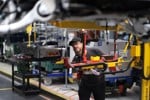
The challenges fleets encounter in the search for optimal incident reporting times and quality, considering technology, driver education, process management, fleet types.
What are the solutions and benefits of reducing incident reporting times?
The following points were raised at the Fleet200 Strategy Network meeting at CCIA in June.
Fleet decision-makers discussed automating the incident reporting process – using connected camera and telematics technology, overlayed with AI to create an automatic incident report and remove reliance on the driver to instigate.
This approach would turn the incident reporting process on its head and would allow fleets to:

The challenges fleets encounter in the search for optimal incident reporting times and quality, considering technology, driver education, process management, fleet types.
What are the solutions and benefits of reducing incident reporting times?
The following points were raised at the Fleet200 Strategy Network meeting at CCIA in June.
Importance of incident reporting times
- Agreement that shorter incident reporting times have clear benefits on cost and time to resolve a claim – all were interested in the opportunities to improve incident reporting
- Driver engagement seemed to be the biggest challenge – you can’t ‘make’ drivers report quickly
- Several attendees said they’d would like more information/feedback from their provider to support them in implementing a change
Process management and technology
- A small proportion of attendees used paper reporting, but most used telephone reporting
- Benefit of telephone reporting is the ability to probe for more information, and check details given by driver
- Nobody used an app or telematics device as the sole means of reporting an incident.
Future of incident reporting
Fleet decision-makers discussed automating the incident reporting process – using connected camera and telematics technology, overlayed with AI to create an automatic incident report and remove reliance on the driver to instigate.
This approach would turn the incident reporting process on its head and would allow fleets to:
- Create an instant incident record
- Proactively check driver safety
- Make faster, more accurate liability decisions.
Login to continue reading.
This article is premium content. To view, please register for free or sign in to read it.

















Login to comment
Comments
No comments have been made yet.